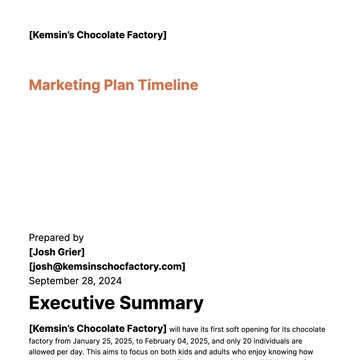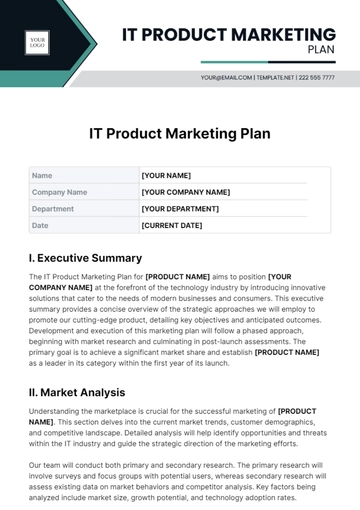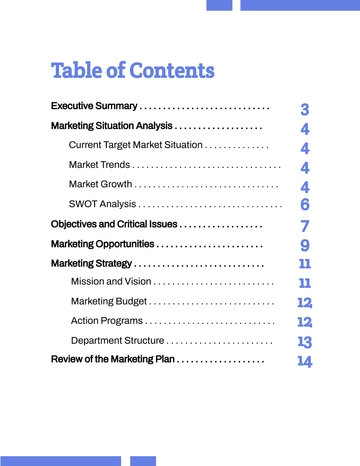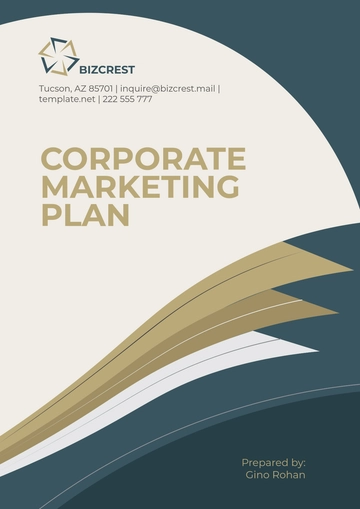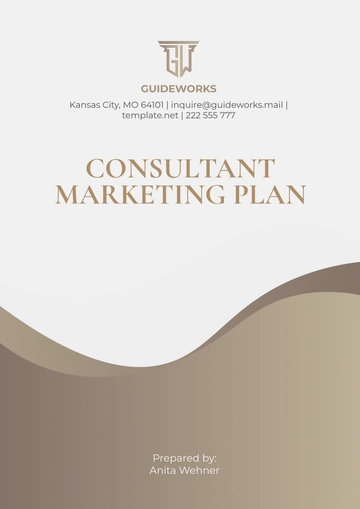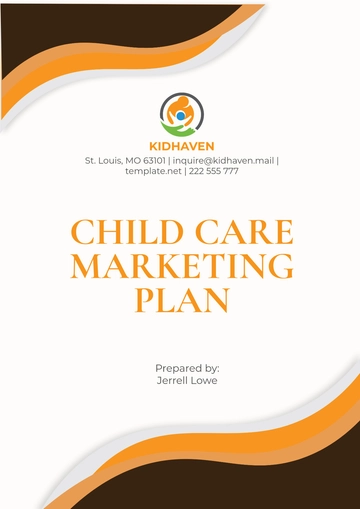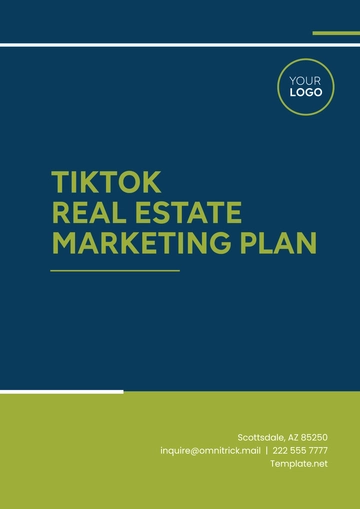Free Gym Marketing Plan
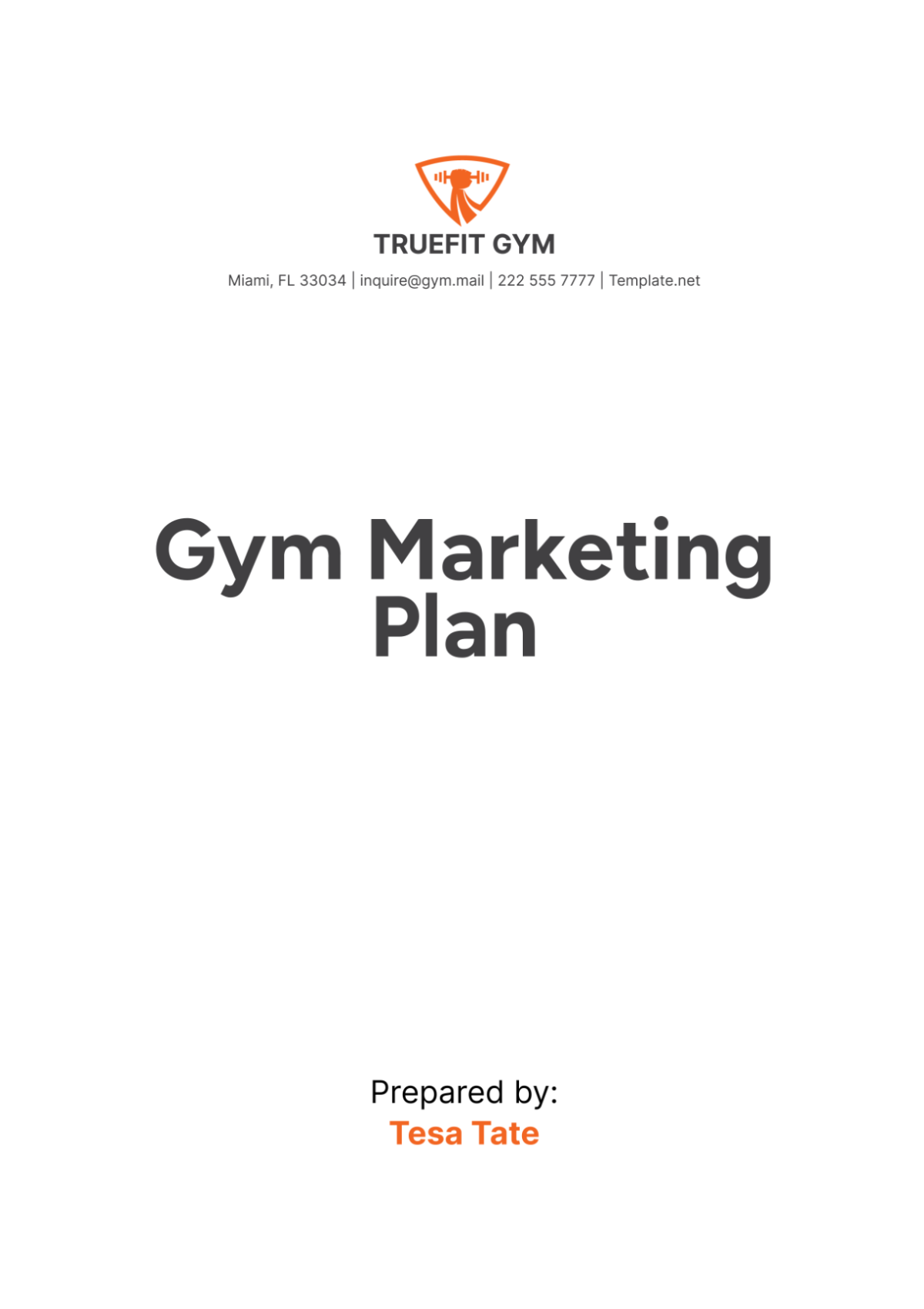
I. Executive Summary
[Your Company Name] Gym aims to become the leading fitness center in our community by offering a comprehensive range of fitness services, state-of-the-art facilities, and exceptional customer service. This marketing plan outlines our strategy to attract new members, retain existing ones, and enhance our brand presence over the next 12 months.
Our gym, [Your Company Name] Gym, is committed to promoting a healthy lifestyle and providing a welcoming environment for individuals of all fitness levels. We offer various membership packages, personal training sessions, group classes, and wellness programs tailored to meet the diverse needs of our clientele.
II. Market Analysis
A. Industry Overview
The fitness industry has experienced significant growth in recent years, driven by increasing health consciousness among consumers. The rise of boutique fitness studios and online fitness platforms has also contributed to the industry's expansion, offering consumers a variety of options to stay fit.
B. Target Market Identification
[Your Company Name] Gym's target market consists of individuals aged 18-45, primarily urban dwellers with disposable income and a keen interest in health and fitness. This demographic is motivated by a desire to improve their physical well-being and is willing to invest time and money in achieving their fitness goals.
C. Market Needs and Trends
Consumers are increasingly looking for personalized fitness solutions that cater to their specific needs and preferences. This trend has led to the popularity of niche fitness programs and classes that offer specialized training in areas such as HIIT, yoga, and functional fitness.
D. Competitive Analysis
[Your Company Name] Gym faces competition from both traditional gyms and boutique fitness studios in the area. Competitors include well-established chains as well as smaller, more specialized studios. Understanding the strengths and weaknesses of these competitors is crucial for [Your Company Name] Gym to differentiate itself in the market.
III. Marketing Goals and Objectives
A. Short-Term Goals
Increase brand awareness among the target market by 20% within the first six months.
Generate 100 new leads per month through targeted marketing campaigns.
B. Long-Term Goals
Achieve a 15% market share within the local fitness industry within three years.
Establish [Your Company Name] Gym as the go-to fitness destination for urban professionals in the area.
Specific, Measurable, Achievable, Relevant, Time-Bound (SMART) Objectives
Increase social media engagement by 25% by the end of the first year.
Achieve a 10% increase in membership sign-ups within the first six months of implementing new marketing strategies.
IV. Target Audience
A. Demographic Analysis
Age: | 18-45 |
Gender | Both male and female |
Income Level: | Middle to upper-middle class |
Education Level: | College-educated or higher |
Occupation: | Urban professionals |
B. Psychographic Analysis
Lifestyle: | Health-conscious, active lifestyle |
Values: | Value health and fitness as important aspects of life |
Attitudes: | Willing to invest in products and services that help them achieve their fitness goals |
C. Geographic Analysis
Urban areas with a high concentration of young professionals
Areas with easy access to public transportation or parking facilities
Behavioral Analysis
Regular gym-goers who prioritize fitness in their daily routines
Willing to try new fitness trends and programs
V. Branding Strategy
A. Brand Positioning
[Your Company Name] Gym positions itself as a premium fitness destination that offers a personalized and results-driven approach to fitness. By focusing on quality over quantity, [Your Company Name] Gym aims to differentiate itself from its competitors and attract a discerning clientele.
B. Unique Selling Proposition (USP)
[Your Company Name] Gym's USP lies in its personalized approach to fitness, offering customized workout plans and nutrition advice tailored to each member's goals and preferences. This personalized touch sets [Your Company Name] Gym apart from other gyms that offer a one-size-fits-all approach to fitness.
C. Brand Voice and Messaging
[Your Company Name] Gym's brand voice is friendly, motivational, and approachable. The messaging focuses on empowering members to achieve their fitness goals and highlighting the benefits of a healthy and active lifestyle.
D. Brand Visual Identity
[Your Company Name] Gym's visual identity is modern, clean, and energetic, reflecting its commitment to helping members lead healthy and active lives. The logo features bold, dynamic typography, with a color palette of vibrant blues and greens that evoke a sense of energy and vitality.
VI. Marketing Channels and Tactics
A. Digital Marketing
Website Optimization: [Your Company Name] Gym's website is optimized for search engines, with relevant keywords and content that appeals to its target audience.
Social Media Marketing: [Your Company Name] Gym utilizes social media platforms such as Instagram, Facebook, and Twitter to engage with its audience and promote its services.
Email Marketing: [Your Company Name] Gym sends out regular newsletters and promotional emails to its members, keeping them informed about upcoming events and special offers.
Search Engine Optimization (SEO): [Your Company Name] Gym's website is optimized for search engines, making it easier for potential customers to find them online.
Pay-Per-Click (PPC) Advertising: [Your Company Name] Gym runs targeted PPC campaigns to drive traffic to its website and generate leads.
B. Traditional Marketing
Print Advertising: [Your Company Name] Gym advertises in local publications and magazines to reach a wider audience.
Direct Mail Campaigns: [Your Company Name] Gym sends out direct mailers to potential customers in its target market, offering special promotions and discounts.
Events and Sponsorships: [Your Company Name] Gym sponsors local events and fitness competitions to increase brand visibility and attract new customers.
C. Public Relations
Press Releases: [Your Company Name] Gym issues press releases to announce new services, partnerships, and events.
Media Outreach: [Your Company Name] Gym reaches out to local media outlets to secure coverage and interviews.
Influencer Partnerships: [Your Company Name] Gym partners with fitness influencers and bloggers to promote its services to a wider audience.
VII. Content Marketing Strategy
Content marketing is a crucial component of [Your Company Name] Gym's overall marketing strategy, helping to engage customers, build brand loyalty, and drive sales. The content marketing strategy will focus on creating high-quality, informative, and engaging content that resonates with [Your Company Name] Gym's target audience.
A. Content Types
[Your Company Name] Gym will produce a variety of content types, including:
Blog posts: Providing fitness tips, workout routines, and nutrition advice.
Videos: Featuring workout demonstrations, interviews with fitness experts, and member testimonials.
Infographics: Presenting health and fitness statistics, tips, and facts in a visually appealing format.
Social media posts: Sharing motivational quotes, behind-the-scenes glimpses, and member success stories.
B. Content Calendar
[Your Company Name] Gym will maintain a content calendar to plan and organize content creation and distribution. The calendar will outline the topics, formats, and publishing dates for each piece of content, ensuring a consistent and cohesive approach to content marketing.
C. Content Distribution Channels
[Your Company Name] Gym will distribute its content through various channels to reach its target audience, including:
Website: Publishing blog posts and videos on the gym's website to attract and engage visitors.
Social media: Sharing content on platforms like Instagram, Facebook, and Twitter to reach a broader audience and encourage engagement.
Email newsletters: Send out regular newsletters to subscribers with links to new blog posts, videos, and other content.
Guest blogging: Writing guest posts for other fitness and lifestyle blogs to expand [Your Company Name] Gym's reach and attract new customers.
VIII. Sales and Promotions
Effective sales and promotions can help [Your Company Name] Gym attract new customers and retain existing ones. The gym will offer a range of membership packages and pricing options to appeal to different customer segments, as well as special offers and discounts to incentivize sign-ups and renewals.
A. Membership Packages and Pricing
[Your Company Name] Gym will offer several membership packages to cater to different customer needs and budgets. These may include:
Standard membership: Access to gym facilities and group fitness classes.
Premium membership: Additional perks such as personal training sessions or access to exclusive classes.
Student or senior discounts: Special pricing for students or seniors.
B. Special Offers and Discounts
[Your Company Name] Gym will periodically offer special promotions and discounts to attract new members and encourage existing ones to renew their memberships. These may include:
Introductory offers: Discounted rates for new members signing up for their first month.
Refer-a-friend discounts: Incentives for existing members to refer friends and family.
Seasonal promotions: Holiday or New Year's offers to capitalize on fitness-related resolutions.
C. Seasonal Campaigns
[Your Company Name] Gym will run seasonal marketing campaigns to align with key fitness seasons, such as the New Year, summer, or back-to-school. These campaigns may include themed workouts, challenges, or events to engage members and attract new customers.
D. Referral Programs
[Your Company Name] Gym will implement a referral program to encourage existing members to refer new customers. This may involve offering rewards such as discounted memberships, free merchandise, or gift cards for successful referrals.
IX. Customer Retention Strategies
Retaining existing customers is key to [Your Company Name] Gym's long-term success. The gym will implement a range of customer retention strategies to keep members engaged and satisfied with their membership.
A. Loyalty Programs
[Your Company Name] Gym will introduce a loyalty program to reward members for their continued support. This may include points-based systems where members earn points for attending classes, referring friends, or renewing their memberships, which can be redeemed for freebies or discounts.
B. Member Engagement Activities
[Your Company Name] Gym will organize regular member engagement activities to build a sense of community and belonging among members. These may include social events, fitness challenges, or workshops led by guest instructors.
C. Feedback and Improvement Mechanisms
[Your Company Name] Gym will actively seek feedback from members through surveys, suggestion boxes, and one-on-one discussions. This feedback will be used to identify areas for improvement and implement changes to enhance the overall member experience.
X. Budget Allocation
Effective budget allocation is essential for maximizing [Your Company Name] Gym's marketing efforts and achieving its business objectives. The gym will allocate its marketing budget across various channels and activities based on their potential ROI and strategic importance.
A. Marketing Budget Overview
[Your Company Name] Gym's marketing budget will be divided into the following categories:
Digital marketing: Including website development, social media advertising, and email marketing.
Traditional marketing: Including print advertising, direct mail campaigns, and events.
Public relations: Including press releases, media outreach, and influencer partnerships.
B. Budget Breakdown by Channels and Activities
[Your Company Name] Gym will allocate its budget across different marketing channels and activities based on their effectiveness and alignment with the gym's marketing objectives. This may include investing more in digital marketing channels that have proven to drive leads and conversions.
C. Return on Investment (ROI) Projections
[Your Company Name] Gym will monitor the performance of its marketing campaigns and initiatives to measure their ROI. This will involve tracking key metrics such as lead generation, conversion rates, and customer acquisition costs to ensure that marketing efforts are delivering a positive return on investment.
XI. Implementation Plan
An effective implementation plan is essential for [Your Company Name] Gym to execute its marketing strategies successfully. The plan will outline the timeline, milestones, roles, and responsibilities for each marketing initiative.
A. Timeline and Milestones
[Your Company Name] Gym's implementation plan will include a detailed timeline that specifies when each marketing initiative will be launched and completed. This will help ensure that the gym stays on track and meets its marketing goals.
B. Roles and Responsibilities
[Your Company Name] Gym will assign roles and responsibilities to key team members to ensure that each marketing initiative is executed effectively. This may include designating a marketing manager to oversee the implementation of the marketing plan and coordinating with other departments.
C. Resource Allocation
[Your Company Name] Gym will allocate resources such as budget, staff, and equipment to support the implementation of its marketing plan. This may involve hiring additional staff, outsourcing certain tasks, or investing in new technology or software.
XII. Monitoring and Evaluation
Monitoring and evaluating the performance of its marketing efforts is crucial for [Your Company Name] Gym to determine its effectiveness and make informed decisions about future marketing strategies.
A. Key Performance Indicators (KPIs)
[Your Company Name] Gym will track key performance indicators such as:
Website traffic and engagement
Social media metrics (likes, shares, comments)
Lead generation and conversion rates
Membership sign-ups and renewals
B. Analytics and Reporting Tools
[Your Company Name] Gym will use analytics and reporting tools to track the performance of its marketing campaigns and initiatives. This may include tools such as Google Analytics, social media insights, and email marketing platforms.
C. Regular Review and Adjustment Process
[Your Company Name] Gym will regularly review the performance of its marketing efforts and make adjustments as needed. This may involve tweaking messaging, reallocating budget, or launching new campaigns based on the data and insights gathered.
XIII. Contingency Plan
A contingency plan is essential for [Your Company Name] Gym to prepare for unforeseen circumstances that may impact its marketing activities. The plan will outline potential risks and mitigation strategies to minimize their impact on the gym's marketing objectives.
A. Risk Assessment
[Your Company Name] Gym will identify potential risks that could affect its marketing efforts, such as:
Changes in consumer behavior or market trends
Technological issues or disruptions
Competitive pressures
B. Alternative Strategies
[Your Company Name] Gym will develop alternative strategies to address potential risks, such as:
Diversifying marketing channels to reach a broader audience
Adapting messaging to align with changing consumer preferences
Offering flexible membership options to appeal to different customer segments
C. Crisis Management Plan
A well-prepared crisis management plan ensures that [Your Company Name] Gym can effectively handle emergencies or unexpected events. The plan includes the following components:
Protocols for Communicating with Customers
Clear communication is vital during a crisis. [Your Company Name] Gym will establish protocols for promptly informing members about any disruptions or changes in services. This may involve sending email updates, posting announcements on social media, and updating information on the gym’s website.
Strategies for Addressing Stakeholders' Concerns
Stakeholders, including employees, investors, and partners, need to be kept informed during a crisis. [Your Company Name] Gym will develop strategies for regular updates and transparent communication to maintain trust and confidence.
Media Communication Strategies
In the event of a crisis, managing media communication is crucial to protect [Your Company Name] Gym’s reputation. The gym will designate a spokesperson and prepare press releases and talking points to ensure consistent and accurate messaging to the media.
XIV. Conclusion
[Your Company Name] Gym's marketing plan is designed to help the gym achieve its business objectives by attracting new customers, retaining existing ones, and building a strong brand presence in the market. By implementing the strategies outlined in this plan and monitoring their performance closely, [Your Company Name] Gym can position itself as a leader in the fitness industry and drive long-term growth and success.
- 100% Customizable, free editor
- Access 1 Million+ Templates, photo’s & graphics
- Download or share as a template
- Click and replace photos, graphics, text, backgrounds
- Resize, crop, AI write & more
- Access advanced editor
Develop effective marketing strategies with Template.net's customizable and editable Gym Marketing Plan Template. Use the AI Editor Tool to tailor marketing plans to your gym's goals. Ensure professional and structured marketing approaches, enhancing visibility and growth with this comprehensive and user-friendly template.

